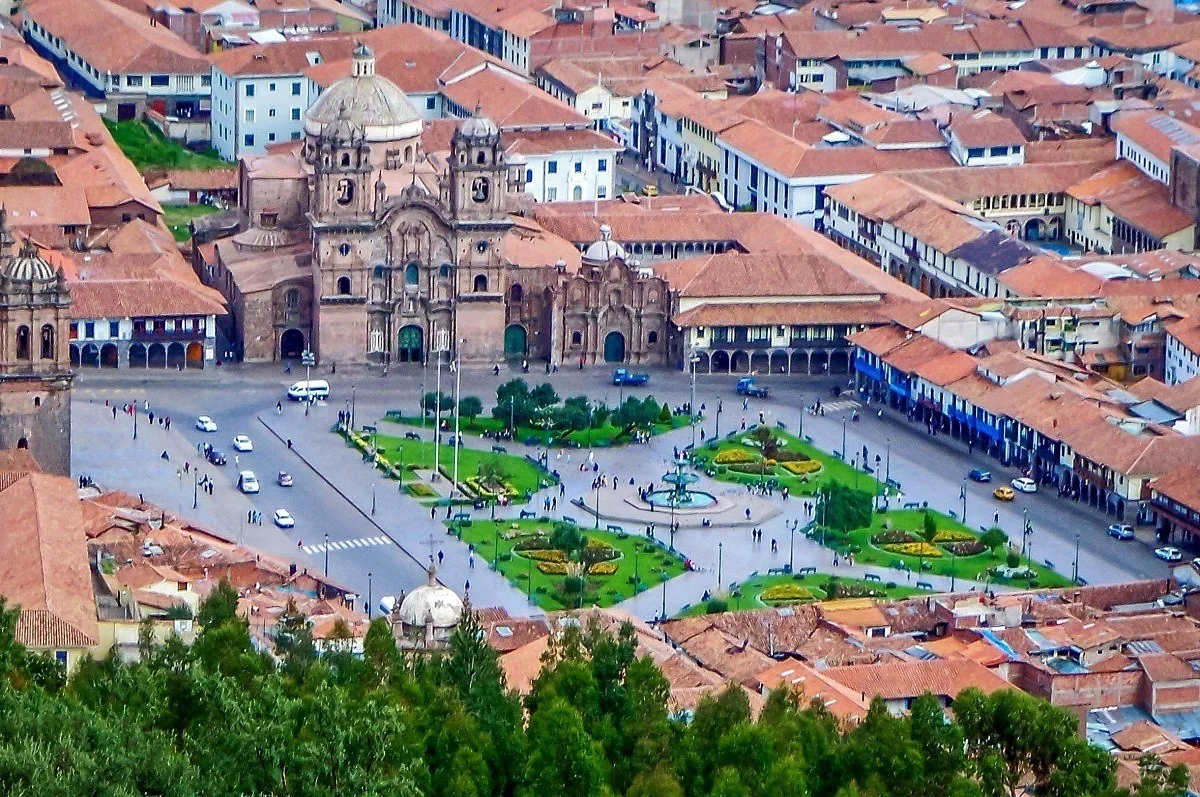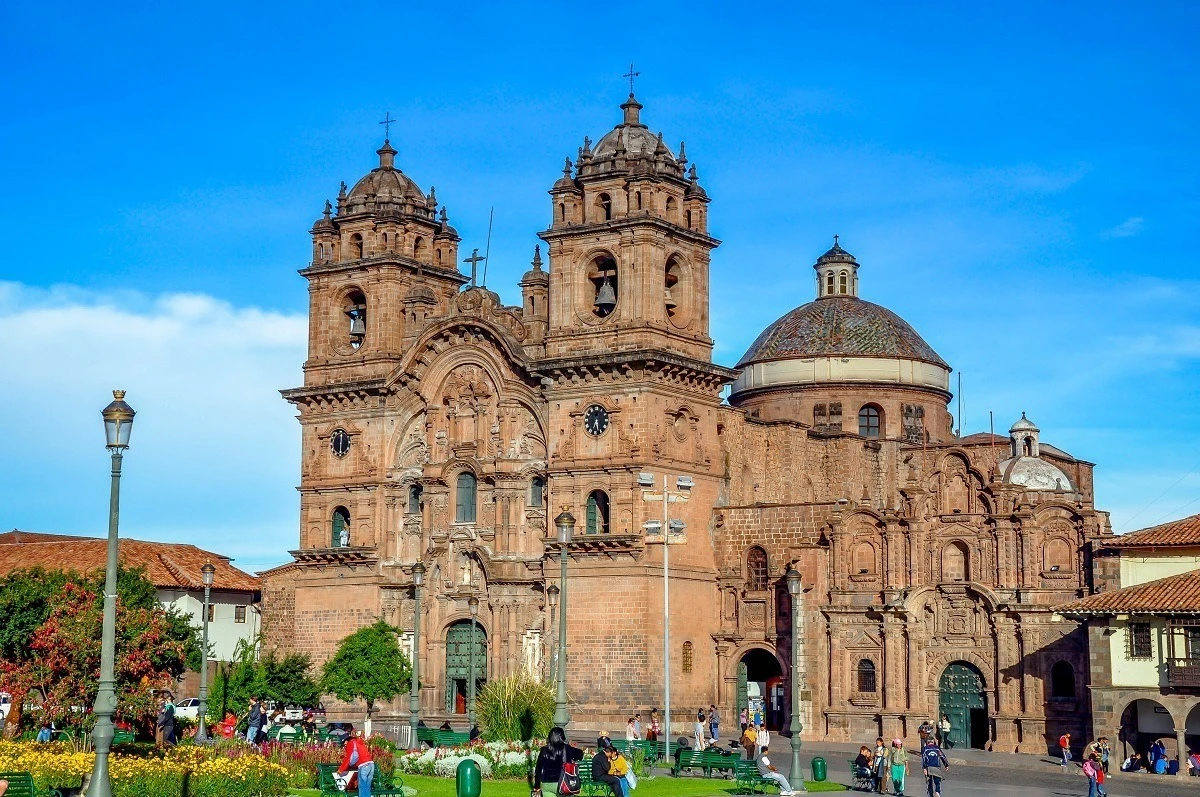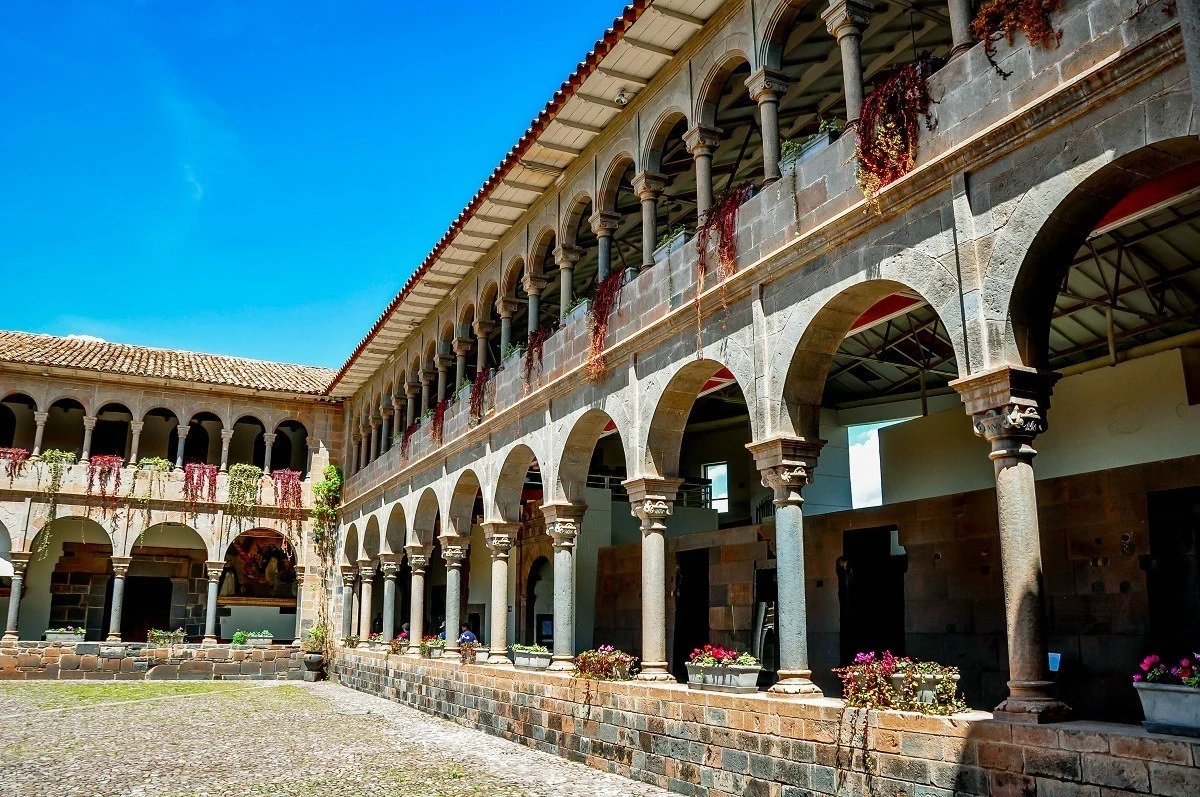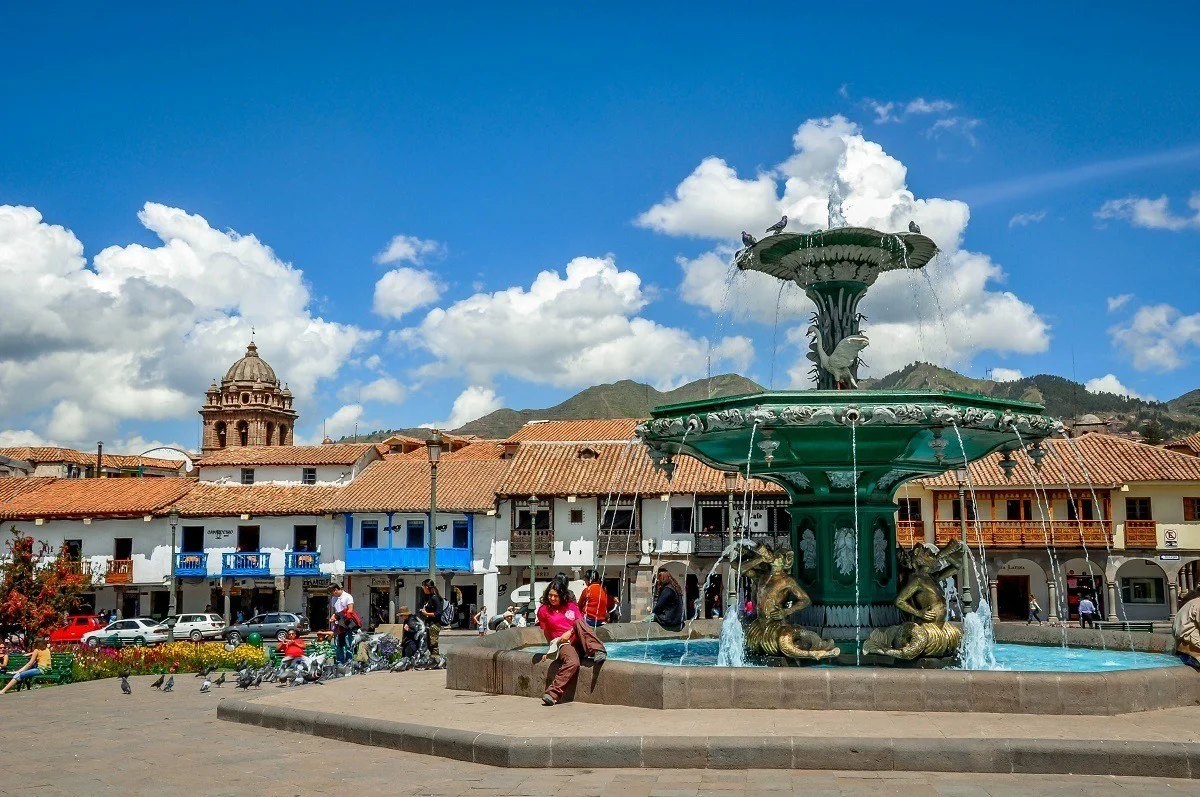Cusco is one of those cities in the world that grabs hold of you and doesn’t let go. Once you visit Cusco, it will haunt your dreams and you’ll be compelled to return again and again. Don’t say you weren’t warned! We set out a Cusco walking tour and discovered this city’s rich heritage.
Cusco isn’t the capital of Peru, but it might as well be. The city was once the capital of the Incan Empire and receives a steady stream of millions of tourists each year. It’s the jumping off point for all tours to Machu Picchu. But visitors that rush out of Cusco to see Machu Picchu or the Sacred Valley miss one of the world’s greatest historical cities.
There are so many things to do in Cusco that it merits at least a few days of time. And there’s no better way to explore the city than on a walking tour.
In recent years, a number of companies have popped up offering a Cusco free walking tour. It’s not really free since the guides work for tips. You can also hire a professional guide who can do a custom tour for you based on your interests (which is what we did).
Or, do a self-guided stroll through the city. Regardless of the option, any Cusco walking tour will hit the highlights. From there, you can focus in on the things to do in Cusco that interest you.
The City of Cusco (spelled Cuzco in Spanish) is a stunning city that sits at over 11,000 feet in the Andes Mountains. The entire town is recognized as a UNESCO World Heritage Site for its important cultural contributions. Given the elevation, any walking tour of Cusco is likely to be a workout!
Given the elevations, it’s best to start in the Barrio de San Blas neighborhood. This neighborhood is filled with artsy shops, small boutique hotels and a handful of cafes. We started our morning at the Iglesia de San Blas church, the oldest church in Cusco dating from around 1560. This church has an amazing carved pulpit like nothing we’ve ever seen before. Unlike the big cathedral down below, this is a neighborhood church, and still retains that small community vibe, despite being in the heart of a large city.
Descending from San Blas, we vised the Plaza de las Nazarenas, taking in the Colonial architecture of the convent and neighboring buildings. After, we headed into the Museo de Arte Precolombino (MAP) – or Museum of Precolombian Art. The collection of artifacts is modest, but tactfully showcases bronze, silver and gold from throughout the country.
The center of Cusco is dominated by the large Plaza de Armas square. The Plaza de Armas is where all of Cusco gathers to socialize, have an ice cream and relax. But it is also the scene of many important historical events. Francisco Pizarro was proclaimed ruler in the square, and the leader of indigenous resistance, Túpac Amaru II, was killed here. Sitting on a bench and soaking up the atmosphere of the city was one of our favorite things to do in Cusco.
The largest of the churches on the Plaza de Armas is the Cathedral, which was partially built from stone blocks taken from the nearby ruins of Saksaywaman. Inside, the Cathedral has a massive altar of silver, attesting to the great wealth in the area. In typical Catholic style, the artwork is adapted to reflect the indigenous peoples of the area. So, in Cusco, the art features The Last Supper where Jesus and the 12 Apostles dine on cuy (guinea pig) – a typical Peruvian delicacy.
We also visited Iglesia de la Compañía de Jesus, built in 1576 by Jesuit missionaries. It was built atop the ruins of the palace of the Incan ruler Wayna Qhapaq (the palace was called the Amarucancha).
One of Cusco’s main streets is the Avenue del Sol. This street bustles with commercial activity. But, along its broad sidewalks vendors set up carts selling all kinds of local delicacies. This is a great spot to sample the best that Cusco has to offer. We encountered a local woman selling fresh, hot tamales – both salty and sweet. We opted for the salty variety and they were delicious! This was the perfect snack.
After our snack, we headed into the Qoricancha (sometimes spelled Qurikancha in English) or Templo del Sol (Temple of the Sun) and the Convent of Santo Domingo. The Qoricancha was the main temple of the Incan Empire where thousands worshiped the Inti sun god. All the gold was stolen by the Spanish and they destroyed the temple.
Atop the ruins, the Spanish built the convent/church of Santo Domingo. At one point, you can stand on a little pedestal and look through three windows, each exactly the same size about 30 feet apart. The remnants of the temple give an inkling to its former glory.
In the afternoon, we drove up the steep hill to the ruins of Saksaywaman (pronounced like “sexy woman”). This site is part fort, part temple and all stunning views of the Cusco Valley. Built with rounded stones and boulders pieced together like a massive jigsaw, the ruins
Saksaywaman reminded us much of the ring forts of western Ireland (such as the Ring Fort of Grianan of Aileach). While the exact purpose of Saksaywaman is unknown, it is believed to be a fortress and was used that way during the Siege of Cusco by the Incas.
But, like all important historical places, Saksaywaman is challenged by decay. The Spanish plundered the site and destroyed much of it, using the recovered stones to build Colonial buildings down in the town. We loved the views and appreciated the historical significance of the site, but weren’t wowed.
We returned to the center of Cusco and the Plaza de Armas. Walking from the Plaza back up to the Barrio de San Blas, you pass one of Cusco’s most notable sites: the Hatun Rumiyoq (The Big Stone). In the wall of the Archbishops residence is a large 12-sided stone. The stone has become a kind of symbol for the city and a source of local pride.
Our time in Cusco was short, but highly enjoyable. While planning our trip to Peru, everyone told us that you can never spend enough time in Cusco – now we see why. There is so much to see here that it could easily take you a couple of days but a Cusco walking tour is a good introduction to the city. But once you are done with the “sights,” you just might want to spend a few days soaking up the atmosphere.
Lance Longwell is a travel writer and photographer who has published Travel Addicts since 2008, making it one of the oldest travel blogs. He is a life-long traveler, having visited all 50 of the United States by the time he graduated high school. Lance has continued his adventures by visiting 70 countries on 5 continents – all in search of the world’s perfect sausage. He’s a passionate foodie and enjoys hot springs and cultural oddities. When he’s not traveling (or writing about travel), you’ll find him photographing his hometown of Philadelphia.






Monica
Wednesday 16th of September 2015
I did the tour as well. I'm a big fan of walking tours, I think it's a great introduction to every city :)